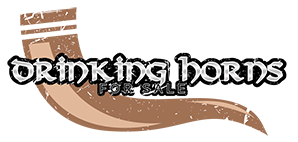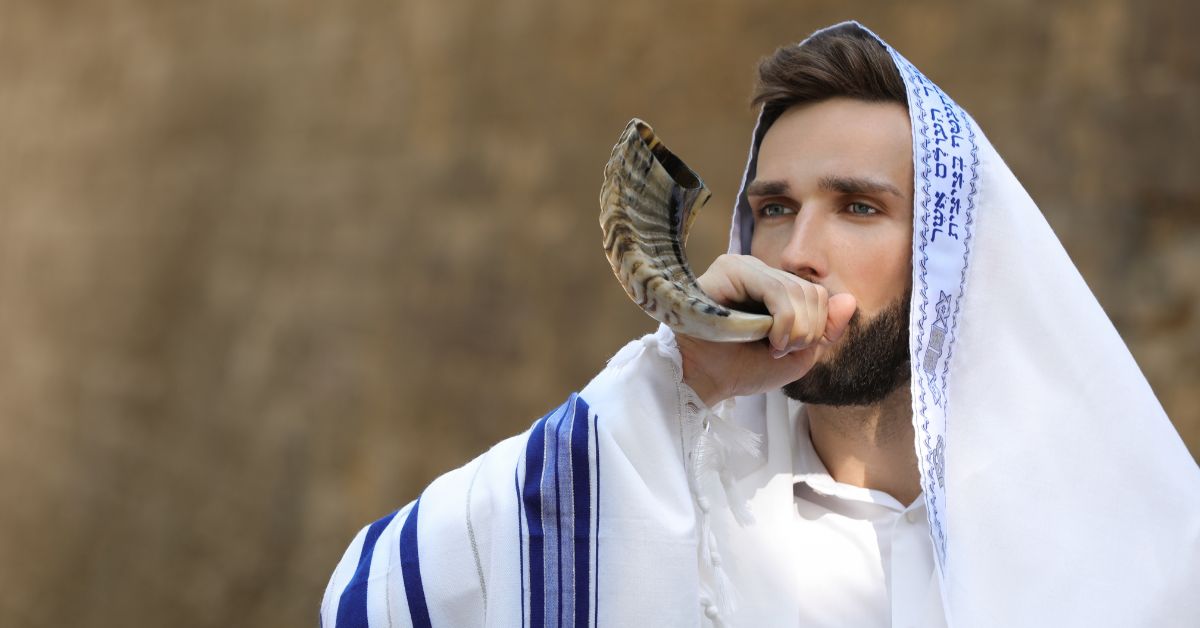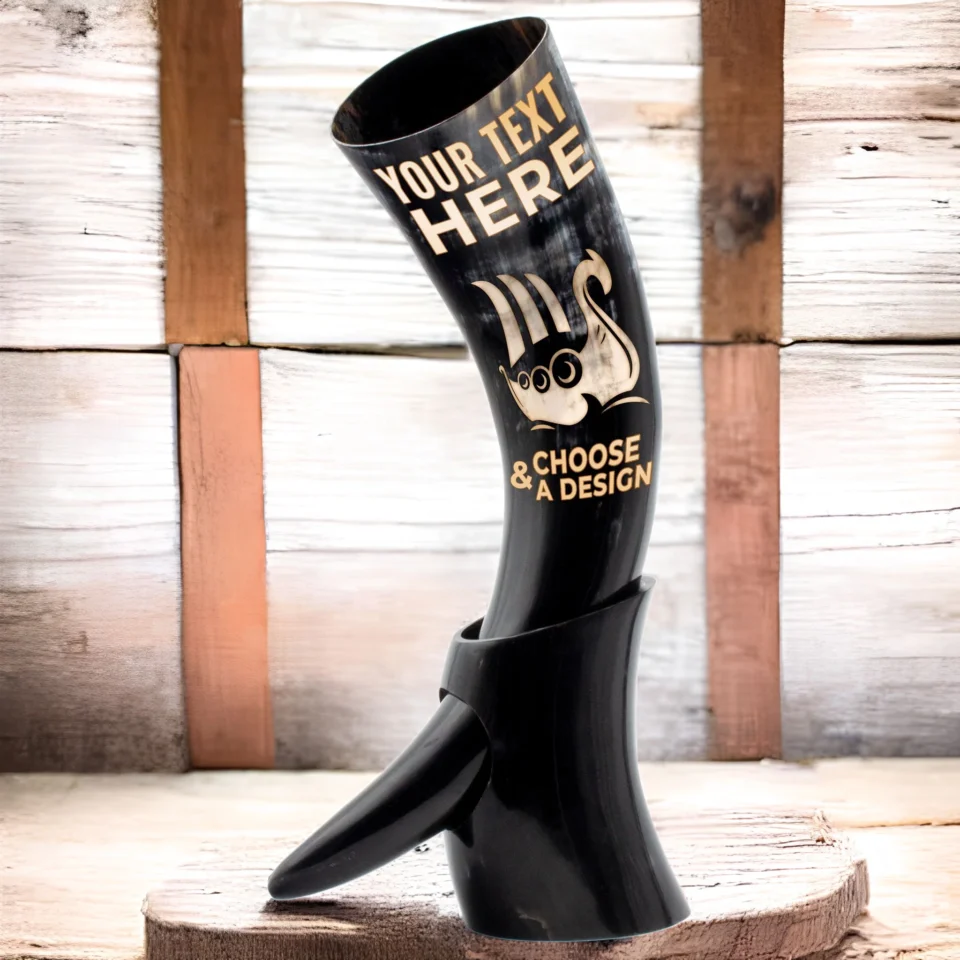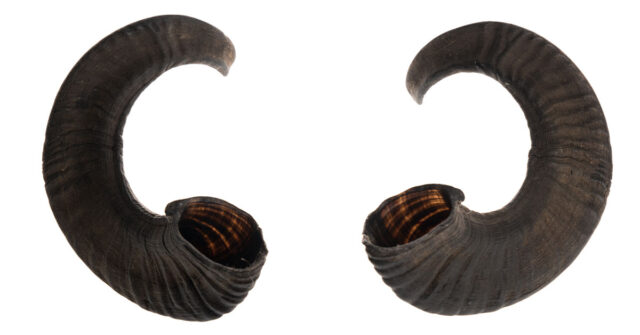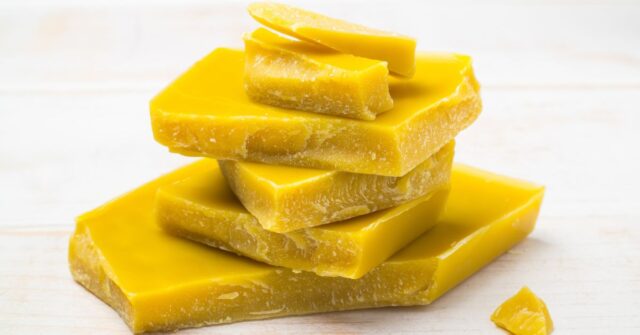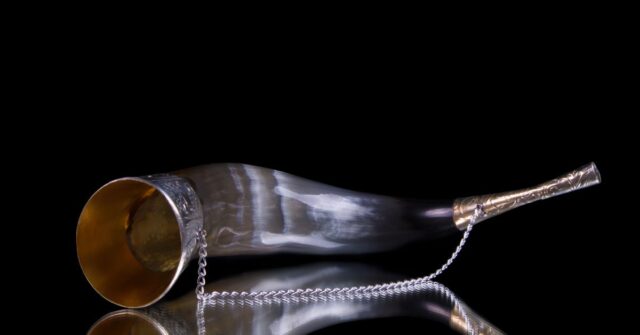Blowing horns are fascinating instruments that have captivated people for centuries.
Known for their distinct, resonant sounds, these horns have been used in various cultures for signaling, ceremonial purposes, and musical performances.
This comprehensive guide will delve into their construction, acoustic properties, cultural significance, practical usage, and tips on choosing the right horn.
Introduction to Blowing Horns
Blowing horns are among the oldest known wind instruments.
Traditionally made from the horns of animals like cattle, sheep, or goats, these instruments have a rich history and a unique sound that varies with the horn’s shape and size.
Today, blowing horns continue to be cherished for their historical value and distinctive acoustics.

What Are Blowing Horns?
Blowing horns, sometimes referred to as winding horns, are natural instruments crafted from animal horns or similarly shaped materials.
They produce sound when air is blown through a hole at the pointed end, causing the air inside to vibrate and create musical notes.
These horns have been used for communication, music, and ceremonial purposes throughout history.
Historical Significance of Blowing Horns
The historical significance of blowing horns is profound. They were used by ancient civilizations such as the Vikings, who employed them in both battle and ceremonial contexts.
In Mesoamerican cultures, particularly in Teotihuacan, similar instruments were integral to various rituals and social gatherings.
The shofar, a type of blowing horn made from a ram’s horn, holds a significant place in Jewish religious traditions, especially during Rosh Hashanah and Yom Kippur.
Modern Uses of Blowing Horns
In modern times, blowing horns are used in reenactments, historical ceremonies, and even in some musical performances.
They are popular among history enthusiasts and collectors for their aesthetic and historical value.
Musicians also appreciate the unique sound qualities that blowing horns bring to traditional and folk music ensembles.
Materials and Construction of Blowing Horns
The construction of a blowing horn greatly influences its sound. Understanding the materials and techniques used in their creation is essential for appreciating their acoustic properties.
Traditional Materials Used
Historically, the materials used for blowing horns have played a crucial role in their sound and functionality. The primary materials include animal horns, wood, and other natural substances.
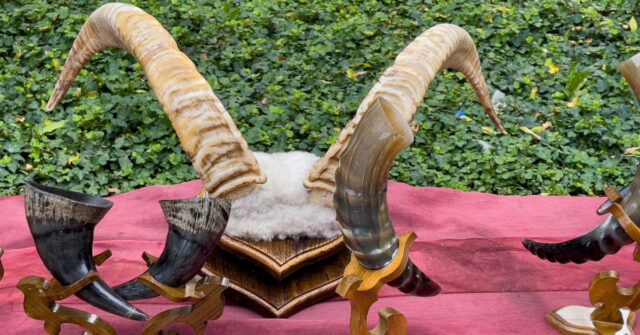
Animal Horns
Historically, the horns of bovine animals such as cows, goats, and sheep have been the primary material for blowing horns.
These horns are chosen for their natural curvature and internal structure, which contribute to the instrument’s resonance and tonal qualities.
Wood and Other Natural Materials
In regions where large animal horns were scarce, wood was often used to create blowing horns.
These wooden horns, sometimes wrapped in birch bark, could replicate the shape and sound of natural horns.
Other materials like conch shells were also used in certain cultures, particularly in coastal areas.
Modern Materials and Innovations
In contemporary times, blowing horns have seen innovations in materials and construction techniques.
While traditional materials remain popular, modern craftsmen have experimented with metals and synthetic materials to enhance durability and sound quality.
Construction Techniques
The techniques used to construct blowing horns vary depending on the material and desired sound.
These methods have been refined over centuries to produce the best possible acoustic properties.

Carving and Shaping
The process of creating a blowing horn involves careful carving and shaping. For animal horns, this includes hollowing out the interior and smoothing the exterior.
For wooden horns, the process involves carving the wood into the desired shape and hollowing out the inside to create a resonant chamber.
Finishing and Decoration
After the basic shape is achieved, the horn is often finished with various techniques to enhance its appearance and durability.
This can include polishing, applying protective coatings, and adding decorative elements such as carvings or metal accents.
Acoustic Properties of Blowing Horns
The acoustic properties of blowing horns are influenced by their material, shape, and size. Understanding these properties is key to appreciating the unique sound of each horn.
How Sound is Produced
Sound in blowing horns is produced by the vibration of air inside the horn.
When the player blows air into the horn, their lip tension and airflow create vibrations that travel through the horn, resonating and amplifying within the chamber.
This process is similar to that of modern brass instruments.

Role of Airflow and Lip Tension
The player’s control over airflow and lip tension is crucial in producing the desired sound.
Variations in these factors can change the pitch and tone, allowing for a wide range of musical expression.
Impact of Horn Shape and Size
The shape and size of the horn significantly impact its acoustic properties. Different shapes and sizes produce different sounds, allowing for a variety of musical possibilities.
Length and Curvature
Longer horns with larger bell ends generally produce lower pitches, while shorter horns produce higher pitches.
The curvature of the horn can also affect the resonance and tonal quality of the sound.
Bore Diameter
The diameter of the horn’s bore (the internal width) influences the volume and richness of the sound.
A wider bore can produce a louder, fuller sound, while a narrower bore produces a sharper, more focused tone.
Resonance and Amplification
The design of the blowing horn, including its shape and material, enhances its resonance and amplification properties.
This allows the sound to carry over long distances, making it effective for signaling and communication.
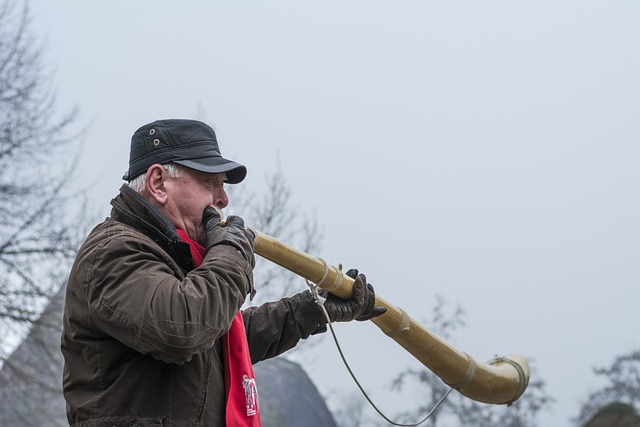
Tone and Pitch Variations
The tone and pitch of a blowing horn can be varied by altering the player’s technique and the horn’s design.
This versatility makes blowing horns suitable for a wide range of musical styles and purposes.
Cultural and Historical Contexts
Blowing horns have played significant roles in various cultures throughout history.
Their use spans from ancient civilizations to modern traditions, reflecting their enduring appeal and versatility.
Blowing Horns in Ancient Civilizations
In ancient times, blowing horns were used for various purposes, including signaling, communication, and ceremonial functions.
Different cultures developed unique styles and uses for these instruments.
Viking and Norse Traditions
In Viking and Norse cultures, blowing horns were used in both battle and ceremonial contexts.
They were employed to signal troops, communicate over long distances, and mark important events.
The distinctive sound of the Viking blowing horn is still associated with these ancient warriors today.
Teotihuacan and Mesoamerican Cultures
In Mesoamerican cultures, particularly in Teotihuacan, blowing horns made from animal horns and conch shells were used in rituals and social gatherings.
These instruments were integral to the cultural and religious practices of the time.
Jewish Religious Practices (Shofar)
The shofar, a type of blowing horn made from a ram’s horn, holds significant importance in Jewish religious traditions.
It is used during Rosh Hashanah and Yom Kippur to mark the beginning of the Jewish New Year and the Day of Atonement, respectively.
Blowing Horns in Modern Ceremonies
Blowing horns continue to be used in modern ceremonies, reenactments, and historical events.
Their unique sound and historical significance make them popular choices for adding authenticity and atmosphere to various occasions.
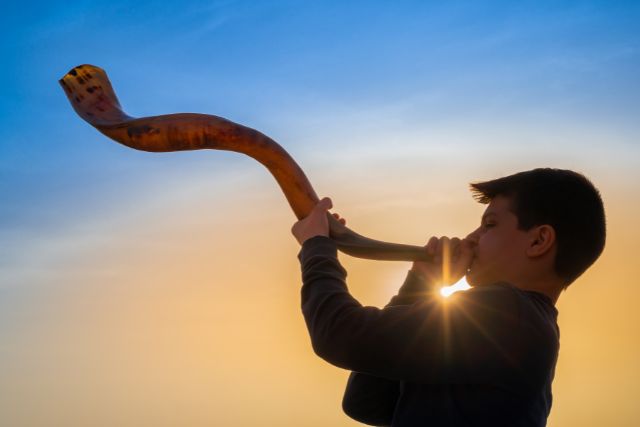
Symbolism and Mythology
Blowing horns are often associated with symbolism and mythology in different cultures.
They are seen as instruments of power, communication, and spiritual significance, reflecting their deep-rooted cultural importance.
Practical Use of Blowing Horns
Using a blowing horn effectively requires practice and technique.
Understanding the basics of playing, maintaining, and caring for these instruments is essential for getting the most out of them.
How to Play a Blowing Horn
Playing a blowing horn involves mastering the technique of producing sound through controlled airflow and lip tension. Here are some basic and advanced techniques to get you started.
Basic Techniques
To produce a sound, place your lips tightly around the mouthpiece and blow air into the horn while adjusting your lip tension.
Experiment with different airflow levels to find the sweet spot where the horn resonates best.
Advanced Techniques
Once you’ve mastered the basics, you can explore advanced techniques such as varying the pitch by adjusting your lip tension and airflow, creating different tones and effects.
Practice regularly to improve your control and expand your musical repertoire.
Maintenance and Care
Proper maintenance and care are crucial for preserving the quality and longevity of your blowing horn. Regular cleaning and careful handling will keep your instrument in top condition.
Cleaning and Preservation
Clean your blowing horn regularly to remove moisture and debris. Use a soft cloth and mild cleaning solution to wipe the exterior, and a brush or pipe cleaner for the interior.
Store your blowing horn in a dry, cool place to prevent cracking or warping. Avoid exposing it to extreme temperatures or direct sunlight.
Repair and Restoration
If your blowing horn gets damaged, it’s important to repair it promptly to prevent further deterioration.
Small cracks can often be sealed with natural adhesives or wax. For more significant damage, consider consulting a professional restorer who specializes in musical instruments.
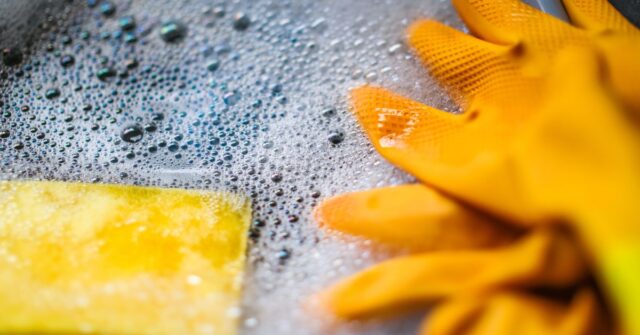
Choosing the Right Blowing Horn
Choosing the right blowing horn involves considering several factors, including material, size, shape, and your intended use. Here are some tips to help you make an informed decision.
Factors to Consider
When selecting a blowing horn, take into account the material, construction quality, and design. These factors will influence the horn’s sound, durability, and overall aesthetic.
Material and Construction
The material of the horn affects its acoustic properties and durability.
Traditional animal horns provide a rich, authentic sound, while modern materials like metals and synthetics offer enhanced durability and consistency.
Look for a well-constructed horn with smooth internal surfaces and a sturdy exterior.
Size and Shape
The size and shape of the horn will determine its pitch and tonal quality. Larger horns typically produce deeper, more resonant sounds, while smaller horns offer higher pitches.
The shape, including the curvature and bell diameter, also affects the sound and ease of play.
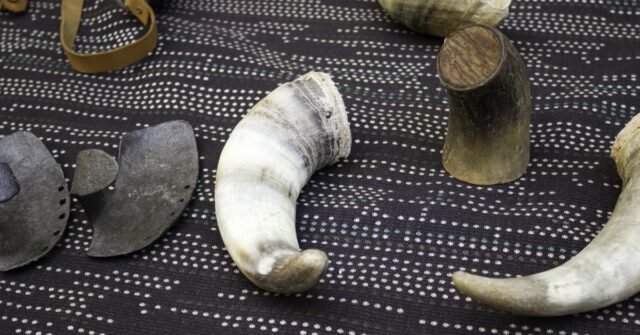
Where to Buy Blowing Horns
You can purchase blowing horns from various sources, including online marketplaces and specialty shops. See the best blowing horns here.
Conclusion
Blowing horns are more than just musical instruments; they are a bridge to the past, carrying the sounds and traditions of ancient cultures.
Understanding their construction, acoustic properties, and historical significance enriches our appreciation for these unique instruments.
Whether you’re a historian, musician, or enthusiast, a well-chosen blowing horn can provide both a deep connection to history and a distinctive addition to your musical endeavors.
Summary of Key Points
We explored the fascinating world of blowing horns, covering their materials, construction techniques, acoustic properties, and cultural contexts.
We also provided practical advice on playing, maintaining, and choosing the right horn.
Final Thoughts and Recommendations
Blowing horns offer a unique blend of historical significance and musical potential.
Choose a horn that resonates with you, both in sound and in story, and enjoy the rich heritage it brings to your life.
